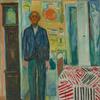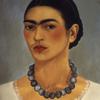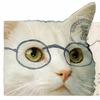Bill Graham and the Rock & Roll Revolution
- SAN FRANCISCO, California
- /
- February 08, 2016
In the 1960s, Bill Graham, who had been living in New York and working as a waiter, cab driver, and bit actor, drifted out to San Francisco where he landed a job as the business manager for the radical San Francisco Mime Troupe. When authorities arrested Mime Troupe leader R.G. Davis for what they termed an “obscene” performance in 1965, Graham quickly organized a benefit concert for Davis’ legal defense with performances and readings by Lawrence Ferlinghetti, Sandy Bull, The Fugs, John Handy, Allen Ginsberg, and The Jefferson Airplane. Graham, who would go on to become one of the most influential concert promoters in history, called it “by far the most significant evening of my life in the theater.”
This spring, San Francisco celebrates this legend of its countercultural heyday as The Contemporary Jewish Museum (The CJM) presents Bill Graham and the Rock & Roll Revolution, the first comprehensive retrospective about the life and career of rock impresario Bill Graham (1931–1991). Graham launched the careers of countless rock & roll legends in the 60s and beyond, among them such iconic Bay Area artists as the Grateful Dead, Santana, and Janis Joplin, at his famed Fillmore Auditorium. He also broke ground in conceiving of rock & roll as a powerful force for supporting humanitarian causes and was instrumental in the production of milestone benefit concerts such as Live Aid (1985) and Human Rights Now! (1988).
Organized by the Skirball Cultural Center, Los Angeles, Bill Graham and the Rock & Roll Revolution is both a deeply personal reflection on Graham’s life and an exploration of how Graham helped transform rock music into the highly lucrative phenomenon of rock theater that persists today. It also illuminates how Graham’s childhood experiences as a Jewish emigrant from Nazi Germany fueled his drive and ingenuity as a cultural innovator and advocate for social justice.
“This exhibition will, without a doubt, have a lot of resonance here in the Bay Area,” says Lori Starr, Executive Director of The CJM. “Bill Graham was a hometown hero, and so many people here were part of his life and legacy. We are thrilled to be able to share his vivid and fascinating story with younger generations and to celebrate all of the memories with older generations.”
Bill Graham and the Rock & Roll Revolution brings together 250 objects, including memorabilia, photographs, psychedelic art, and more, from the private Graham family archive and other lenders including Carlos Santana’s personal collection and the Experience Music Project, many on view for the first time with this exhibition.
Highlights include:
• A stunning collection of live performance and backstage photos of rock & roll royalty who performed at the Fillmore, Winterland, Day on the Green, Live Aid, and other Bill Graham Presents concerts throughout the era, including: Bo Diddley, Peter Frampton, Aretha Franklin, the Grateful Dead, Jimi Hendrix, Mick Jagger, Jim Morrison, Stevie Nicks, Tina Turner, The Sex Pistols, Sting, and Stevie Wonder. The images were taken by such preeminent rock photographers as Jim Marshall, Ken Regan, and Baron Wolman.
• Famous instruments, including:
-Shard of a Fender Stratocaster smashed by Jimi Hendrix during a performance at Royal Albert Hall, London, on February 24, 1969.
-Pete Townshend’s 1968 Gibson SG Special used during the performance of Tommy at the Metropolitan Opera House on June 7, 1970, and thrown to a fan in the audience.
-A 1970s Carlos Santana guitar, on loan from Santana himself.
-1959 Gibson Les Paul played by Duane Allman on the album At Fillmore East.
• Items given to Graham by performers, such as:
-Janis Joplin’s tambourine and microphone used during a Fillmore East show.
-Handwritten note of appreciation from Donovan, signed “Thy humble minstrel.”
-Silver megaphone from the Rolling Stones 1981 tour.
-Keith Richards’ leather boots repaired by Graham with duct tape during the 1981 tour.
• Original artwork and preparatory drawings for iconic Fillmore posters, including work by Bonnie MacLean, Wes Wilson, David Singer, Greg Irons, and David Byrd. These will be among thirty iconic Fillmore posters, many signed by the artists.
• The original apple barrel that greeted guests at the Fillmore Auditorium with fresh apples. Accompanied by a sign that read “Take One or Two,” the apple barrel represented Graham’s wish “to make the place more haimish” (warm and comfortable).
• Spectacular attire worn by Graham during Grateful Dead New Year’s Eve shows, including his “Father Time” and butterfly costumes.
• Audio guide, affording visitors the chance to hear recordings of Graham himself as he shares anecdotes about artists who performed at the Fillmore.
• Additional noteworthy rock & roll memorabilia, including:
-Graham’s personal scrapbook of Live Aid clippings and mementos, as well as his letter to Live Aid (Philadelphia) artists, in which he wrote: “Your being here gives this project life and makes it meaningful for millions of people throughout the world…”
-Assorted fan mail as well as letters of complaint received by Graham, which he painstakingly saved in large-format scrapbooks.
• Charred relics from the offices of Bill Graham Presents, which was firebombed and burned to the ground in 1985 by suspected neo-Nazis. Many believe the act was in retaliation for Graham’s very public protest of President Ronald Reagan’s visit to a Bitburg, Germany cemetery where members of the Waffen SS were buried.
• Treasured photographs and artifacts from Graham’s early life, many on view to the public for the first time. These help to document Graham’s childhood experiences as a Jewish refugee from Nazi Germany, New York City street kid, and Korean War soldier.
• Exclusive video of recently conducted conversations with Ralph Moratz, Graham’s boyhood friend with whom he fled Berlin and crossed the Atlantic in 1941.
• Archival concert footage, as well as historical audio interviews. Famous interviewees include Carlos Santana, Jack Casady, and Wavy Gravy.
Bill Graham
Bill Graham was born Wolodia “Wolfgang” Grajonca in Berlin on January 8, 1931, the son of Russian Jews who emigrated to Germany in search of a better life. In 1938, after Kristallnacht, Graham’s mother decided to send him with his sister Tolla onward to France. In 1941, as part of a Red Cross effort to help Jewish children fleeing the Nazis, Graham arrived in New York, malnourished and suffering from rickets, at the age of eleven. After the war, he would learn that his mother and one of his five sisters had perished in Europe.
Graham went to live with a foster family in the Bronx and spent his teenage years in New York City before being drafted into the US Army to fight in the Korean War. Because no one could pronounce Grajonca correctly, he changed his name to Graham, selecting it from the phone book. Returning from the Korean War, he worked for a time in the Catskills and in New York City, where he decided to become an actor.
Graham relocated to San Francisco just as the hippie movement was gathering steam, and became the business manager for the San Francisco Mime Troupe. He was thirty-four years old when he organized the fundraiser to support the group founder’s legal defense on November 6, 1965, a transformative moment for Graham, who had finally found his calling.
Soon afterwards he took over the lease on the famed Fillmore Auditorium, where he produced groundbreaking shows, including sold-out concerts by the Grateful Dead, Cream, Big Brother and the Holding Company, and the Doors, among many others.
Graham was distinguished for his booking mix, bringing the bands creating the psychedelic sound together on the same stage with jazz, blues, and folk artists. He also began booking English bands that had never before performed on the west coast like The Who.
In 1968, Graham moved the Fillmore into the Carousel Ballroom, calling it Fillmore West, and opened the Fillmore East in New York. After closing the two Fillmore locations in 1971, he took over Winterland, another San Francisco concert venue, and branched into band management and tour promotion under the banner “Bill Graham Presents.” Graham also began organizing large stadium concerts locally, like Day on the Green at the Oakland Coliseum, and nationally, such as the Watkins Glen Festival in New York that drew 600,000 people.
Graham presented many landmark benefit concerts, including Live Aid in 1985 and two Amnesty International tours, “Conspiracy of Hope” and “Human Rights Now!” He was the driving force behind the 1987 Soviet-American Peace Concert in Moscow, organized a twelve-hour rock telethon that raised two million dollars for the victims of the massive earthquake that hit the Bay Area in October 1989, and more.
Graham died on October 25, 1991, when the helicopter he left in from a Huey Lewis and the News show in the East Bay crashed into an electrical tower. A week later, nearly half a million people filled the Polo Field in Golden Gate Park for a free concert held in his memory. Three months after his death, Graham was inducted into the Rock and Roll Hall of Fame.
For a detailed biography by Robert Greenfield, co-author with Graham of Bill Graham Presents: My Life Inside Rock and Out, go to: billgrahamfoundation.org/bio.html







100x100_c.jpg)







